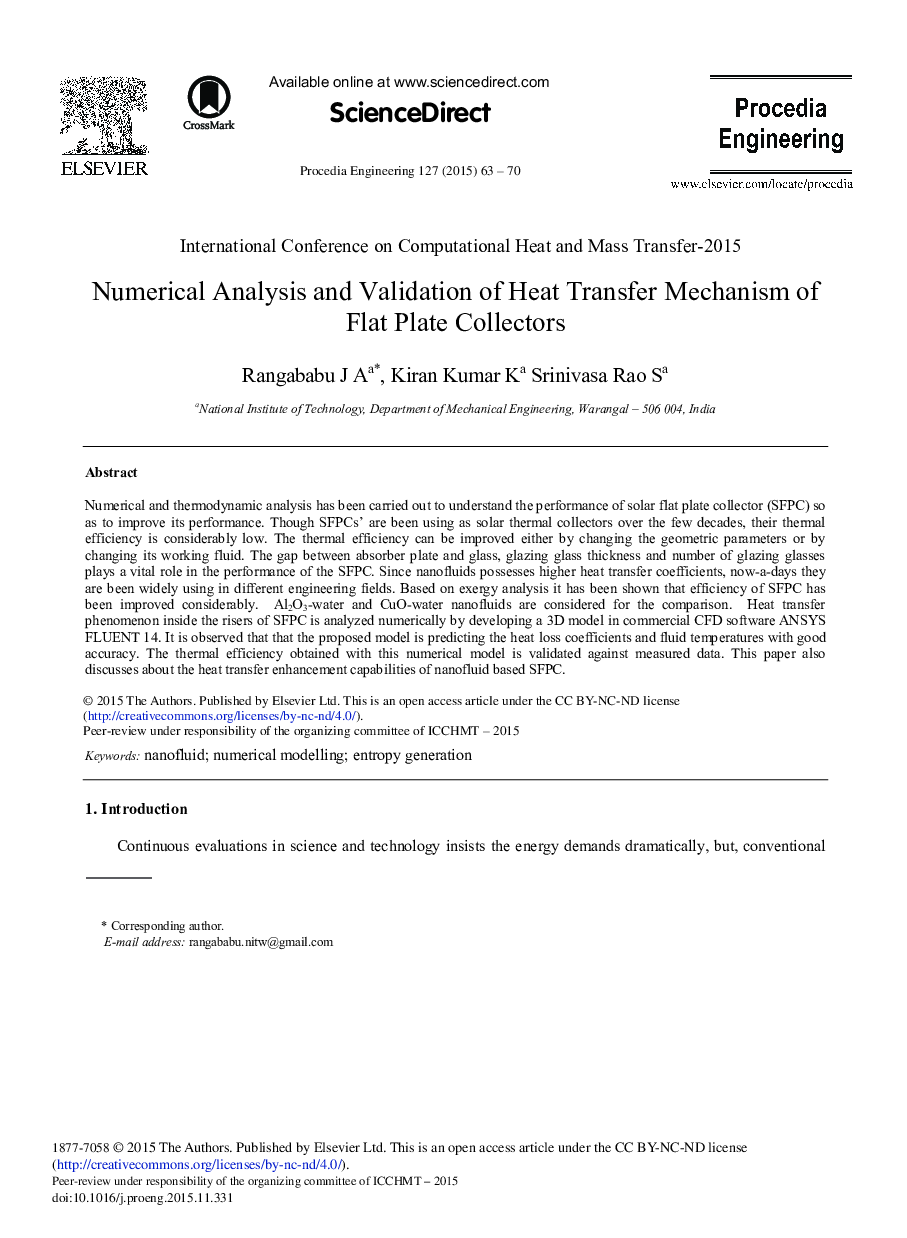| Article ID | Journal | Published Year | Pages | File Type |
|---|---|---|---|---|
| 854716 | Procedia Engineering | 2015 | 8 Pages |
Numerical and thermodynamic analysis has been carried out to understand the performance of solar flat plate collector (SFPC) so as to improve its performance. Though SFPCs’ are been using as solar thermal collectors over the few decades, their thermal efficiency is considerably low. The thermal efficiency can be improved either by changing the geometric parameters or by changing its working fluid. The gap between absorber plate and glass, glazing glass thickness and number of glazing glasses plays a vital role in the performance of the SFPC. Since nanofluids possesses higher heat transfer coefficients, now-a-days they are been widely using in different engineering fields. Based on exergy analysis it has been shown that efficiency of SFPC has been improved considerably. Al2O3-water and CuO-water nanofluids are considered for the comparison. Heat transfer phenomenon inside the risers of SFPC is analyzed numerically by developing a 3D model in commercial CFD software ANSYS FLUENT 14. It is observed that that the proposed model is predicting the heat loss coefficients and fluid temperatures with good accuracy. The thermal efficiency obtained with this numerical model is validated against measured data. This paper also discusses about the heat transfer enhancement capabilities of nanofluid based SFPC.
